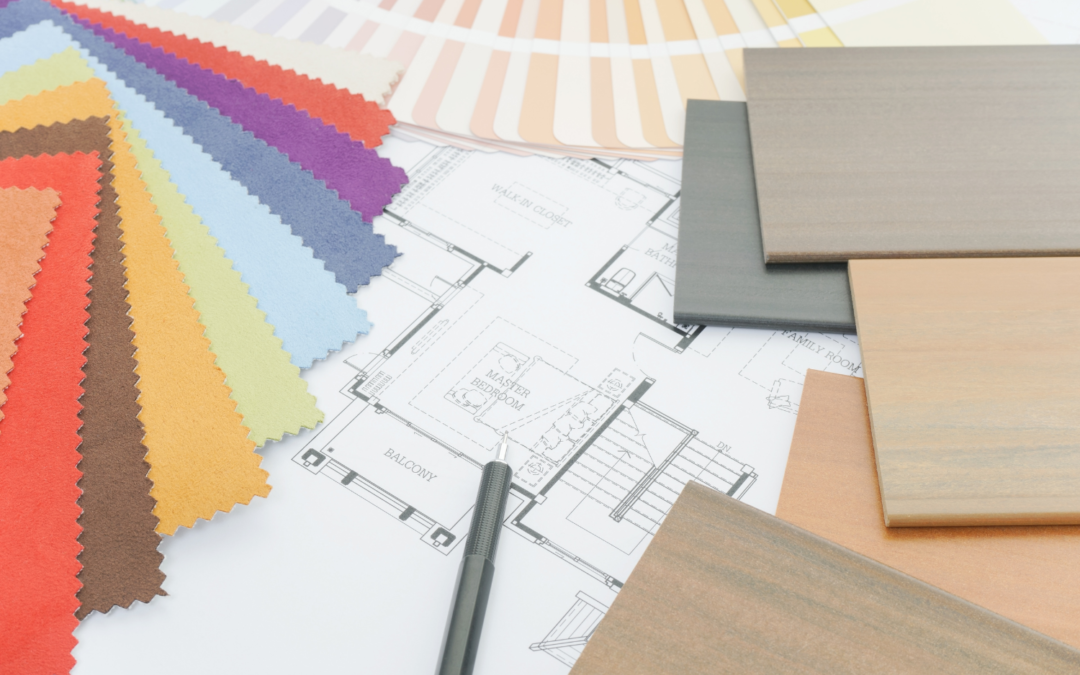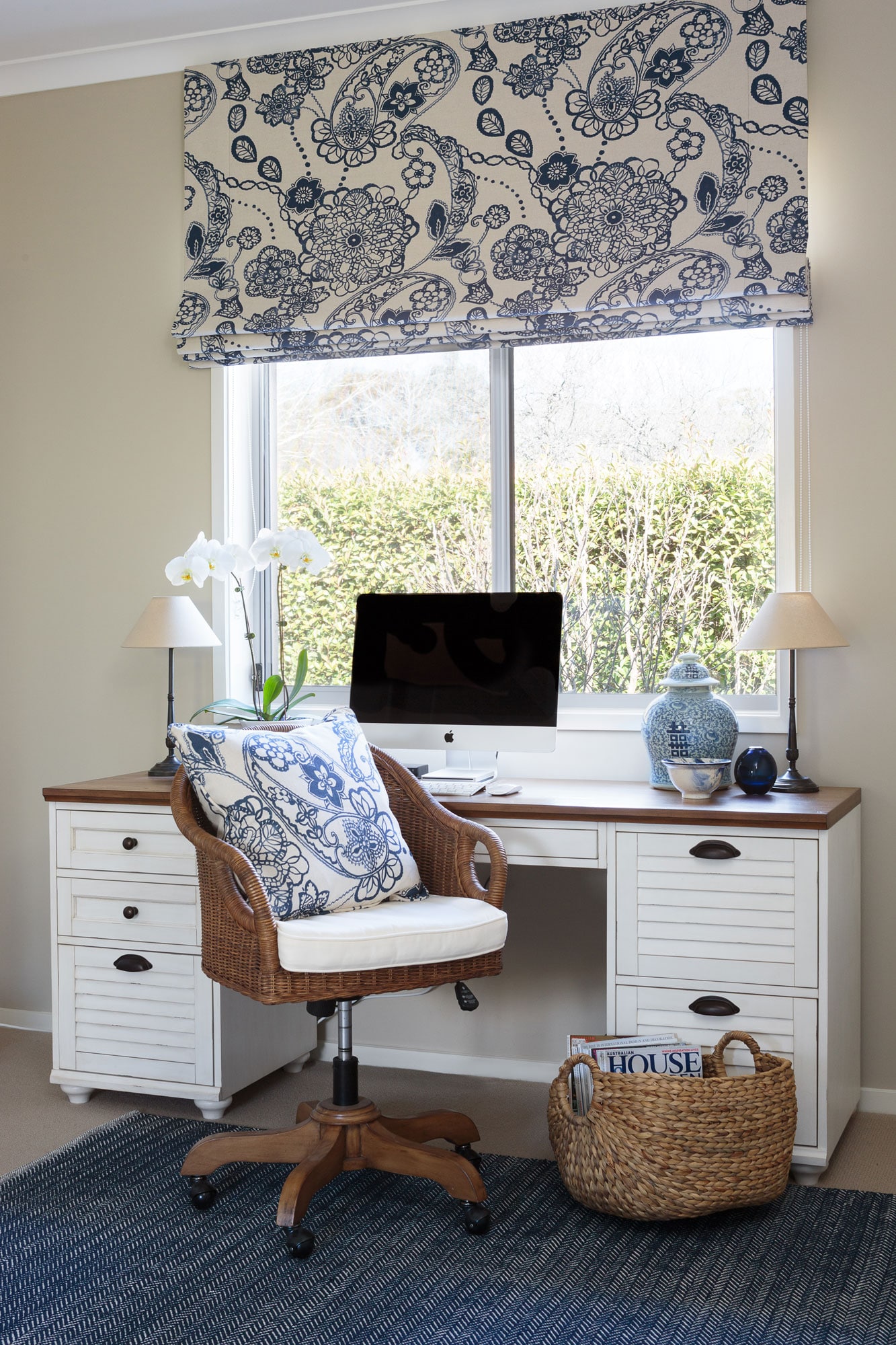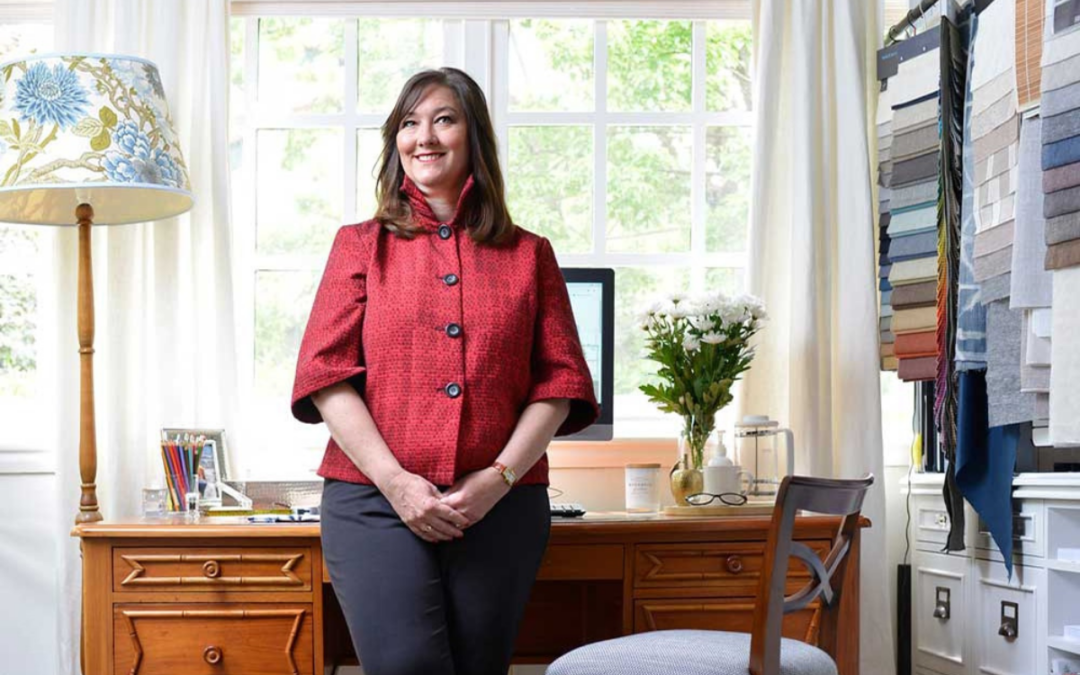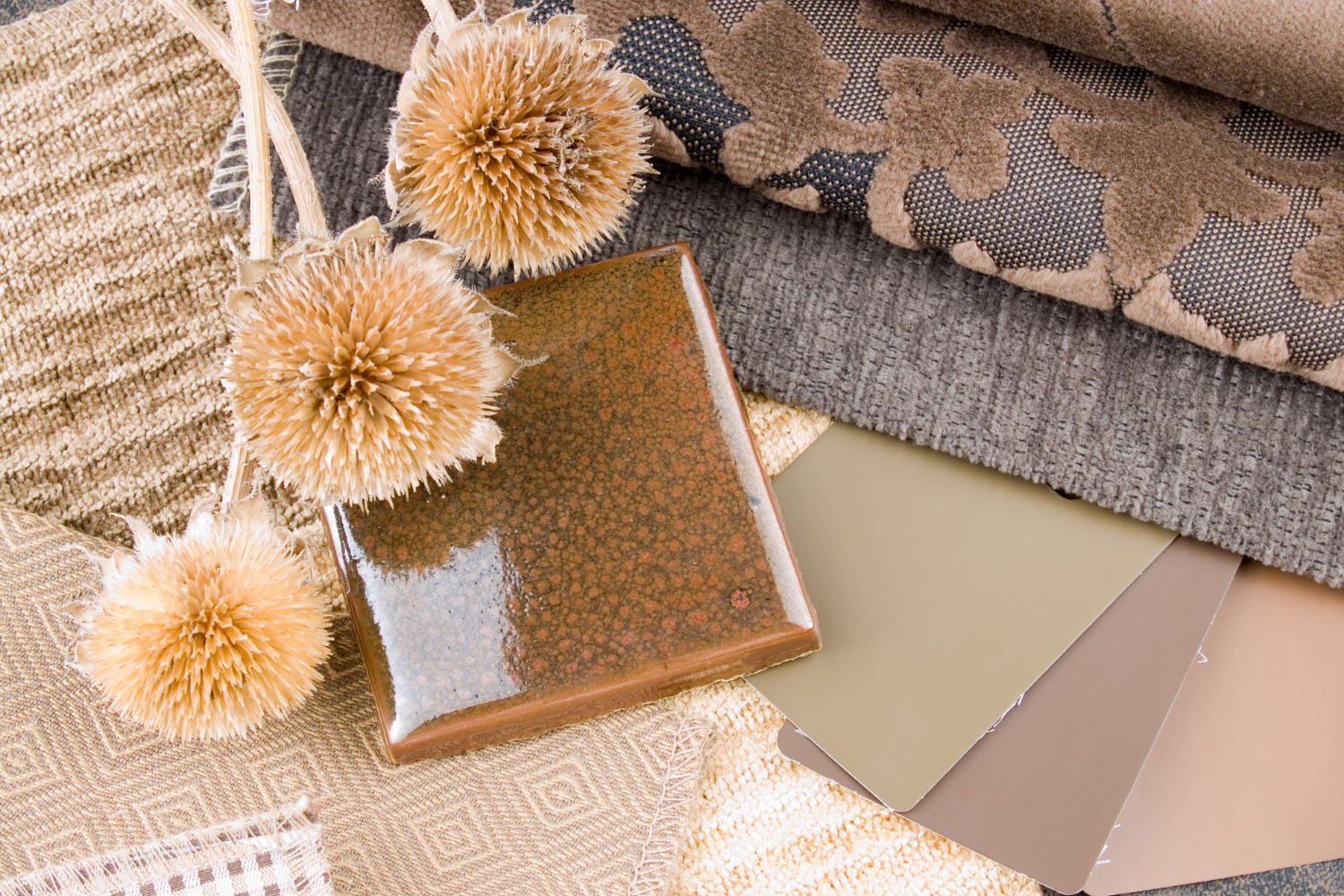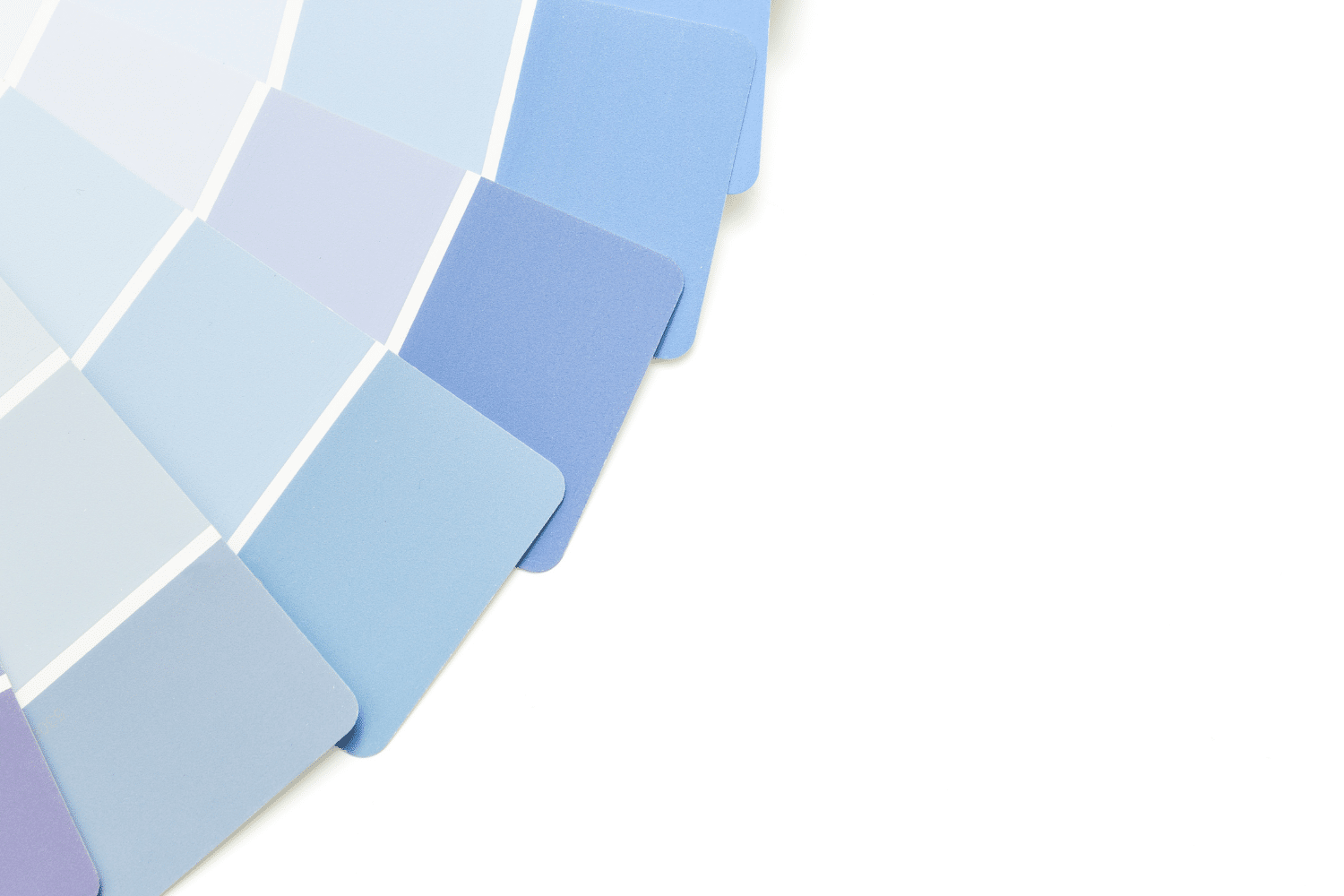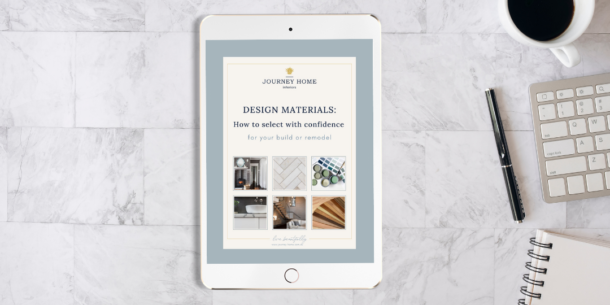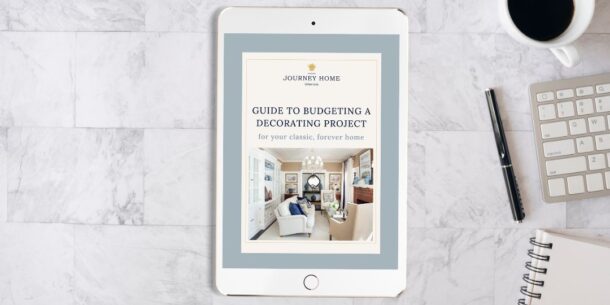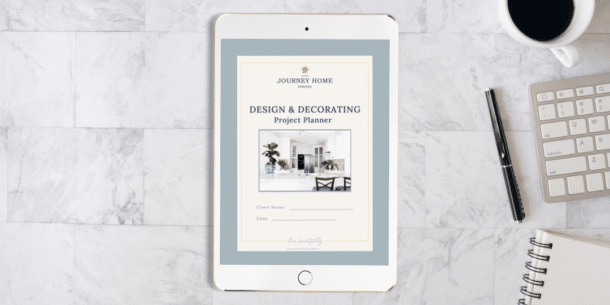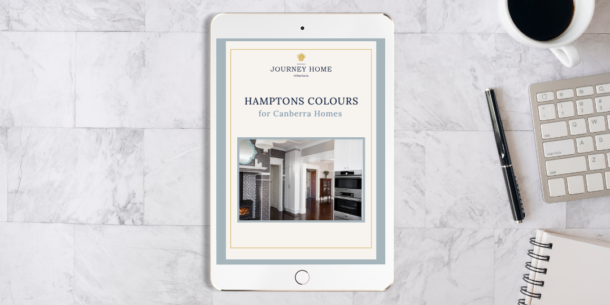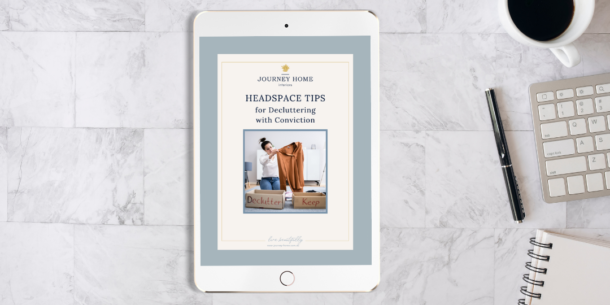In one of my recent workshops with the Journey Home Decorating Club, we gathered together over trays of samples, working to create fresh yet classic combinations of fabrics, tile samples, paint swatches, and other materials. In other words, a design concept.
It was a lovely evening together, and I received such powerful feedback. The main takeaway? Doing this hands-on was quite different from browsing online. I couldn’t agree more.
If you’re starting a renovation or interior decorating project, you (or a professional designer) will need to select the right materials. And by “right”, I mean materials that blend functionality with beauty, create a cohesive colour palette, and speak to your personal sense of style.
I know, it’s a lot to ask, isn’t it? Fortunately, I do have some words of wisdom here for you today to help with creating your own design concept. Or, of course, you’re welcome to book a free intro chat with us to see how we can get involved in your project.
Before I share my steps for creating a design concept with colours and materials, I want to point out that this is just one step of many required when creating your forever home. Other steps you will want to consider, in this order:
- How to Create a Functional Room Layout
- How to Select Furniture and Get Quotes
- What You Need to Know about Ordering Your Furnishings
Feeling equipped and ready to dive in? Keep reading…
First, what is a design concept?
A design concept is exactly what it sounds like — the concept for a room, including materials, colours, patterns, etc. It is the first step in designing a space, as it sets the direction for how the room will look and feel.
It is also helpful to consider any existing elements that will be staying in the space, such as that heirloom chaise you inherited from family or the existing flooring or joinery you don’t intend to replace. That way you can consider those elements (and their respective style, colours, etc.) when planning your design concept.
In other words, everything that will physically be in the room should be part of the initial design concept, that way everything is integrated cohesively and beautifully…without one or two items standing out like an elephant. So, how do we do this?
Step 1: Gather real, physical samples.
The single, best thing you can do when selecting materials for your home (other than hiring a designer, of course) is to get real, physical samples, just like I did with the Journey Home Decorating Club. Gather any or all of the following…
- Fabric swatches (including ones that match existing furnishing you’re keeping)
- Paint swatches
- Metal bits for curtain rods, knobs, and joinery handles
- Wallpaper swatches
- Wood samples for joinery or flooring (or to match existing furnishings)
- Countertop and tile samples
- And anything else that will be incorporated into the design
Note: You may be surprised to hear that we hold our Ask an Expert consultations over Zoom. Shouldn’t we do it in person? Well, I’m happy to say that we have just as much success thanks to our 10+ years of hands-on experience. (When you’ve been doing this for 10 years, you will find colour palettes effortless, too!) We know exactly which hues and material combinations are right for your space — because we’ve already seen them thousands of times in person!
Step 2: Create a blank backdrop & use proper proportions.
Most people think the next step is to start pairing items and materials together to see what looks good, and for the most part, you’re right. However I want you to succeed in this endeavour, so I’m going to share a couple of designer secrets that I recommend.
First, select your backdrop. This could be a tray, a counter, or a large sheet of poster paper, but it’s important that that backdrop is as true white as possible. Our eyes perceive any colour based on what it’s adjacent to, so if you place your materials on a colour backdrop, you won’t get a true reading of how they will look in the room. (I share more about selecting congruent colours here.)
My next secret tip? Proportions. When you’re gathering samples, do your best to include them in a proportion that matches how they will be used in the room. For example, the colour of your walls are often the most pervasive colour in the room…but paint swatches tend to be small, making it difficult to judge with your joinery and fabric samples.
Instead, ask the paint supplier for a large-scale version of the swatches you’re considering. The same goes for an area rug (large proportion), metal samples for joinery knobs and pulls (small proportion), or fabric for a sofa (medium proportion).
Step 3: Experiment, iterate and have fun with it.
Okay, now is the moment when you can start experimenting with different combinations of colours and materials! I know this step can be stressful for most people, who feel like they don’t really have an eye for this sort of thing, but I can tell you that iteration is part of the learning process. Keep mixing your samples until you find a combination that instinctively feels right to your eyes.
Step 4: Call in the pros if you need it.
If you’re still struggling to land on a design you like, this is a great opportunity to talk with an interior designer. You can use our Designer for a Day service to enlist our hands-on help selecting materials for your entire space in one day, or you can book our Ask an Expert service to get 1-hour virtual coaching sessions, where we will help you with various aspects of your project and keep it moving forward. You don’t have to go it alone!
Step 5: Measure, document & order.
Once you know which colours, fabrics, and materials will be welcome in your final design, you’re ready to define the precise amount and dimensions you will need. For example, how much of that white tile will your builder need for your new kitchen splashback? How long do your new curtains need to be? Etc.
If you’re planning a renovation, these will need to be clearly documented for your builder (you can use my Design Organiser to do so!), so contractors can give you apples-to-apples quotes for the scope of work and ordering is clear and efficient.
If you’re planning a decorating project, I recommend recording your decisions and dimensions before you start ordering furnishings. This will help you place precise orders and communicate with any trades who may be involved, like the workroom designing your Roman shades or reupholstering your favourite chair.
Well, that’s it for now. I hope this has been helpful and given you a good idea of what’s involved when designing a space that looks so cohesive that your guests will think a professional did it. If you do decide that a professional is in order, reach out to us here for a free intro chat and we’d be happy to discuss ways we can assist you.
Warmly,
Nadine

